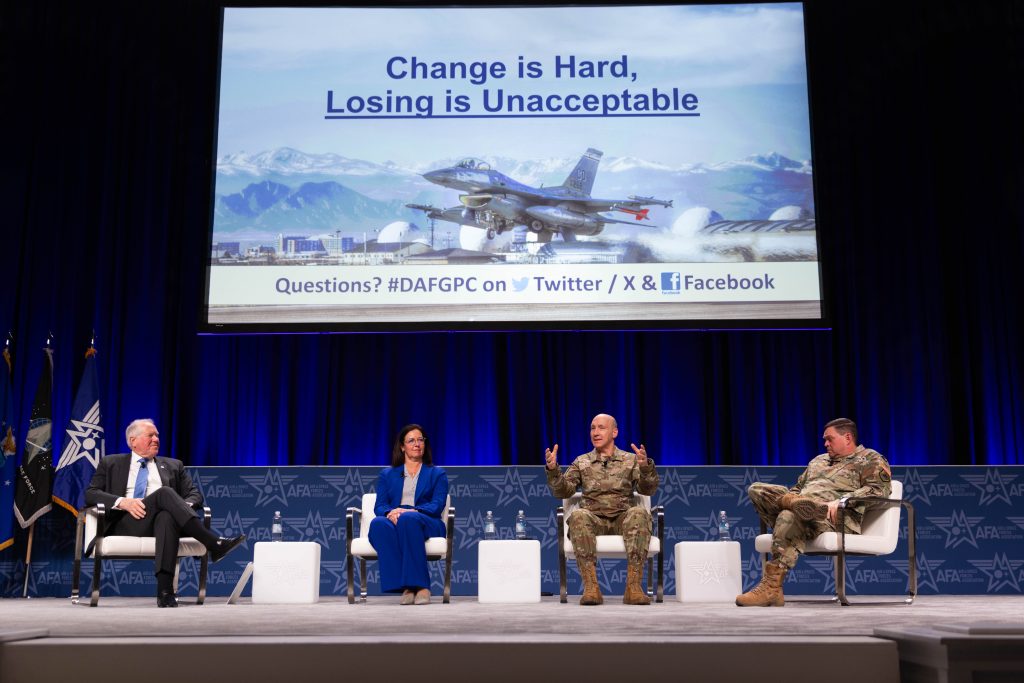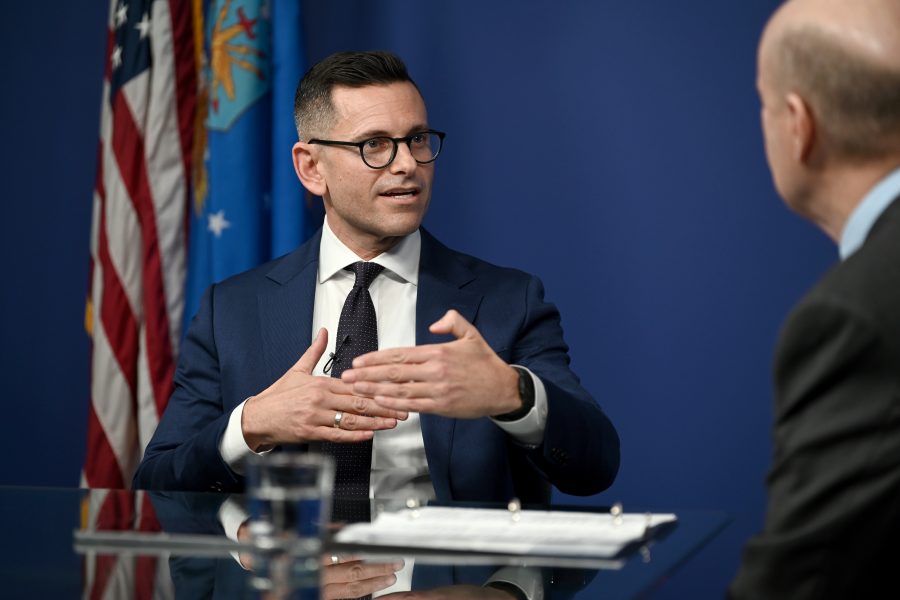The Department of the Air Force is undertaking its biggest overhaul since the Cold War, with new commands, ranks, units, and training.
Now, the Air Force and Space Force must sell the changes to nearly 700,000 Airmen and Guardians, the DAF’s top civilian in charge of personnel noted March 12.
“One of the biggest challenges is having our force understand why these changes are coming,” Alex Wagner, the assistant secretary of the Air Force for manpower and reserve affairs, said at an AFA Warfighters in Action Event.
Secretary of the Air Force Frank Kendall concluded in the fall of 2023 that the service was not sufficiently prepared to confront China’s rising military might and ordered a sweeping “re-optimization” unveiled in February at the AFA Warfare Symposium.
“The Secretary challenged all of us and said, ‘What do we need to do to put ourselves in a position to meet the growing threats and the competition, particularly from the People’s Republic of China?’ and talent plays an outsized role in that,” Wagner added.
A number of initiatives are underway. Air Education and Training Command will become Airmen Development Command, offering more modernized and holistic training. The services will be deployed in new ways, with the Air Force creating Air Task Forces and Combat Wings as “units of action” to replace the current, more ad-hoc model. Large-scale training exercises and no-notice readiness events are also in the offing. Then, there is the introduction of the much-ballyhooed warrant officer track for the cyber and IT career fields.
“I think, in general, people are skeptical of change but receptive to leadership,” Wagner said of how the service will explain the alterations to service members.
Top leaders have already visited bases to discuss the changes. Air Force Chief of Staff Gen. David W. Allvin’s stops have included Peterson Space Force Base, Colo., and he has also addressed students, faculty, and staff from the U.S. Naval War College in Newport, R.I.
The newly installed Chief Master Sergeant of the Air Force, David Flosi, who took over on March 8, says he is prepared to move out to sell re-optimization to Airmen. Chief of Space Operations Gen. B. Chance Saltzman and Chief Master Sergeant of the Space Force John F. Bentivegna are expected to conduct their own sales pitch.
“When you see the Chief of Staff of the Air Force, the Chief of Space Operations, and the Secretary of the Air Force all operating from exactly the same page, it says this isn’t an initiative that’s going to last one year or two, but it’s going to last throughout their terms,” Wagner said.

The Air Force has plastered QR codes with more information on re-optimization changes in prominent places and conducted a sustained campaign to promote the changes on its social media pages. Wagner said more outreach is planned.
“We always undervalue the degree to which we communicate,” Wagner said. “I want to ensure that the force understands the strategy, understands the threat, and understands why we’re taking the steps that we’re taking. Our two best messengers are, in the Air Force, the Chief of Staff for the Air Force and the Chief Master Sergeant of the Air Force. In the Space Force, the Chief of Space Operations and Chief Master Sergeant of the Space Force. They are in the process of going out and speaking to the force.”
Allvin has noted some of the changes may take his entire four-year tenure as Chief to materialize. Kendall has said he is confident the changes will live on even if he departs his position. Wagner said that the acceptance of the changes would also be a process.
“It’s not going to happen overnight,” Wagner said. “Because it’s complex, and change is going to be hard. But we’ve got a unified team focused not only on making these changes, but helping people understand what it means for them and their families.”
